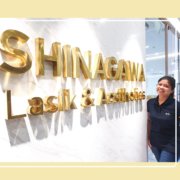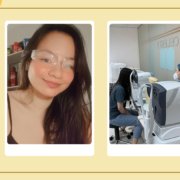Can blood pressure affect the eyes? It actually can.
Blood pressure can affect the eyes, and sometimes in a pretty significant way. Although our blood pressure will fluctuate naturally throughout the day, sometimes it is sustained at too high or low a level and this is when problems can arise.
While most people with irregular blood pressure will be monitored by a doctor and sometimes take medication to control the issue, we delve into how exactly blood pressure affects our eyes, especially if problems are left untreated.
What exactly is blood pressure?
Blood pressure is how much force it takes for your heart to pump blood throughout your body. High blood pressure (hypertension) affects 26 percent of the world’s population and means it takes your heart significant effort to pump blood throughout your body. Low blood pressure (hypotension) affects 31 percent of the world’s population and means that blood may not be circulating efficiently enough; people with blood pressure on the low/normal end of the spectrum may be familiar with the all-too-common cold hands and feet problem.
Blood pressure is expressed by two numbers, a systolic pressure measurement (when the heart beats) and a diastolic pressure measurement (in between beats). You will see it written as either a fraction, like “120/60” or written as “120 over 60”. The systolic measurement always comes first – in this instance, it’s 120.
There are various causes of abnormal blood pressure.
CAUSES OF HIGH BLOOD PRESSURE INCLUDE:
- Sleep apnea
- Diet (too much salt)
- Lack of exercise/obesity
- Kidney disease
- Abnormal thyroid function
- Certain medications, like decongestants and some pain relievers
- Tobacco smoking
CAUSES OF LOW BLOOD PRESSURE INCLUDE:
- Certain prescription medications
- Body position (called orthostatic hypotension – like bending down and getting up too fast)
- Stress
- Not breathing properly (your pressure can drop if you hold your breath a lot, like during a workout)
- High blood pressure and the eyes
- High blood pressure that is not properly treated and controlled can affect various parts of the body, including the eyes. The high pressure can damage the blood vessels connected to the eyes which can damage the retina, causing fluid buildup under the retina, and damage the optic nerve, causing hypertensive retinopathy or even an eye stroke. All of these are serious issues that can lead to vision loss.
Routine eye exams can sometimes detect blood pressure problems before you have any symptoms. Make sure to tell a doctor if you experience a sudden onset of floaters, pain, blurry vision or vision loss.
Low blood pressure and the eyes
Some people have what’s commonly referred to as low/normal blood pressure, meaning it’s slightly lower than the normal range, but most do not experience symptoms. However, when blood pressure is too low, it can be serious. Symptoms of low blood pressure can include light-headedness, weakness, nausea, and difficulty concentrating.
People with low blood pressure can also experience eye-related symptoms, such as blurry or fading vision. This is because certain parts of the body, in this case, the eyes, are not getting sufficient blood supply.
Blood pressure is routinely checked by general practitioners, but if you do not go for regular checkups, it could be missed.
This is why routine exams of your eyes are also important as they could signal other systemic issues, like high or low blood pressure. If you have questions about how your blood pressure could affect your ability to have a vision correction procedure, reach out to one of our experts for help.
Schedule an eye check-up with us and let our doctors see just how healthy you and your eyes are.
Call our Patient Care Lines: (+632) 7-368 5238 l (+63) 917 862 7454 l (+63) 921 217 0517 for inquiries and appointments or talk to our consultants via LiveChat here on our website.






